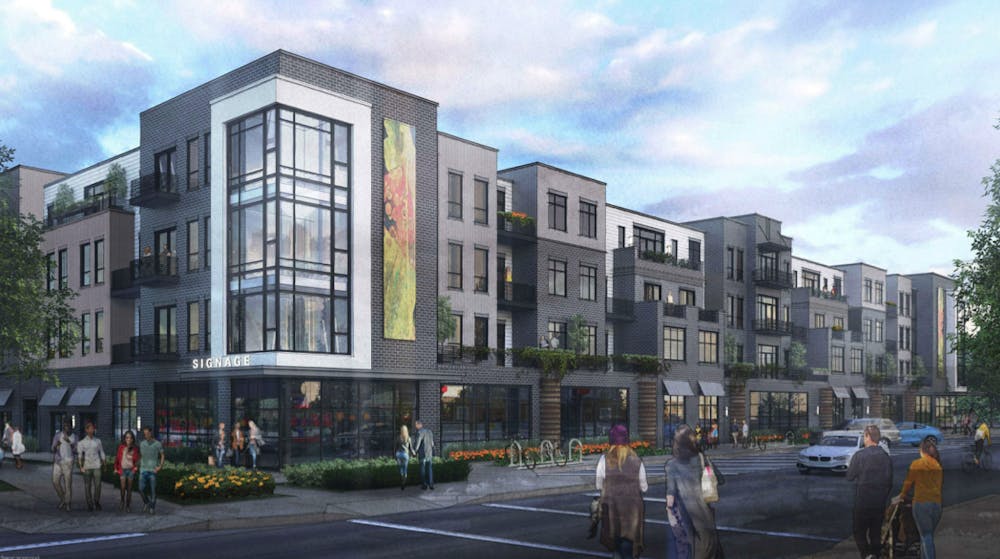The Bloomington City Council met for a regular session Wednesday to approve the city’s appropriation under the American Rescue Plan. Immediately following that session, the council held a committee meeting to discuss various issues, all of which will likely be brought up for final votes at the next regular session in early September.
American Rescue Plan Appropriations
The council approved a more than $3 million appropriation of funds from the American Rescue Plan, which was signed into law by President Joe Biden earlier this year. All nine members of the council voted in favor of the appropriation. Bloomington is set to receive an estimated $22.1 million from the ARP in total.
The city will put the more than $3 million toward various city programs. $1.2 million, for example, will be granted to the United Way to address homelessness and housing insecurity. $250,000 will be granted to the Bloomington Housing Authority to create more affordable housing options.
The city will also spend $150,000 to fund programs to accelerate job training and $700,000 to identify and inventory lead-based service in the city’s utilities system.
Final Bond Approval for Affordable Housing Development
The city council signaled support for the final approval needed to release up to $30 million in bonds for a low-income affordable housing renovation at the Crestmont housing complex located near the intersection of 14th St. and N Morton St.
Crestmont, which is managed by the Bloomington Housing Authority, has planned renovations that would include new in-unit washers and dryers, air conditioning units and dishwashers.
Six council members voted to recommend the council give the final approval at its next full meeting, when it takes a final vote.
Councilmember Dave Rollo opted to abstain from giving a recommendation, citing concerns with how the Bloomington Housing Authority charges its tenants for utilities.
The Bloomington Housing Authority charges one monthly payment that includes all fees and utility payments, despite the fact that all units are billed to the BHA separately. Because the utility payments are distributed across all the residents, it means some residents likely pay more for utilities than they actually consume in a given month, while other residents may pay less than they consume.
“When one uses utilities — electricity or water or so forth — there’s an incentive to save,” Rollo said. “There’s a cost signal and you get a bill and you determine how efficient you want to be.”
Development Proposal North of College Mall
A proposed development located just north of College Mall generated a positive response from the city council with a few holdouts. Five members said the full council should pass it when it comes to a final vote, while two abstained from giving a recommendation.
Councilmember Matt Flaherty suggested he might bring an amendment before this proposal moves to a final vote.
This 3.2-acre development was reviewed by the council previously in Feb. 2020, but the developer was forced to return to the council for approval again due to some changes in the new design.
Their new design will include three-bedroom units, in addition to the studio, one, and two-bedroom units from the previous design. The developer also made a design change to make the parking garage on the property less visible from its exterior.
Some council members expressed concerns surrounding traffic, which could potentially disrupt the surrounding neighborhood.
“'I’m supportive of it, but I'm really concerned about the traffic and the impact on the neighborhood,” councilmember Ron Smith said.
Addressing the August 4th Annexation Meeting
Bloomington City Council President Jim Sims addressed public backlash against the council’s decision Aug. 4 to end an in-person meeting in favor of moving it online due to concerns surrounding the COVID-19 delta variant.
“That was not an easy decision,” Sims said. “But I will say that I think it was done in the best interest of community health and safety.”
Sims said he felt there was more of a positive response from the community for moving it online than there was a negative reaction. The motion to recess on Aug. 4 was supported unanimously by the council.
“As the President of this body, I think I have nothing to apologize for,” he said. “I’ll be the first to admit that I caught a lot of flak about that from certain folks in the community.”
Thomas Smith House
The Bloomington City Council signaled that they would support a proposal to add the Thomas Smith House, located at 1326 S Pickwick Pl, to the list of historic districts in the city. All seven members of the council who were present for the vote said the council should pass it when it comes to a full vote.
The house was built by its namesake Thomas Smith, who was a founding member of the Bloomington Reformed Presbyterian Church, in 1828. The house, which sits on a 1.8 acre lot, is made of brick. The creation of this historic district, should it pass a final vote, would protect the housing structure, though the full lot would not be protected from new development in the future, Development Services Manager Jacqueline Scanlan said.




